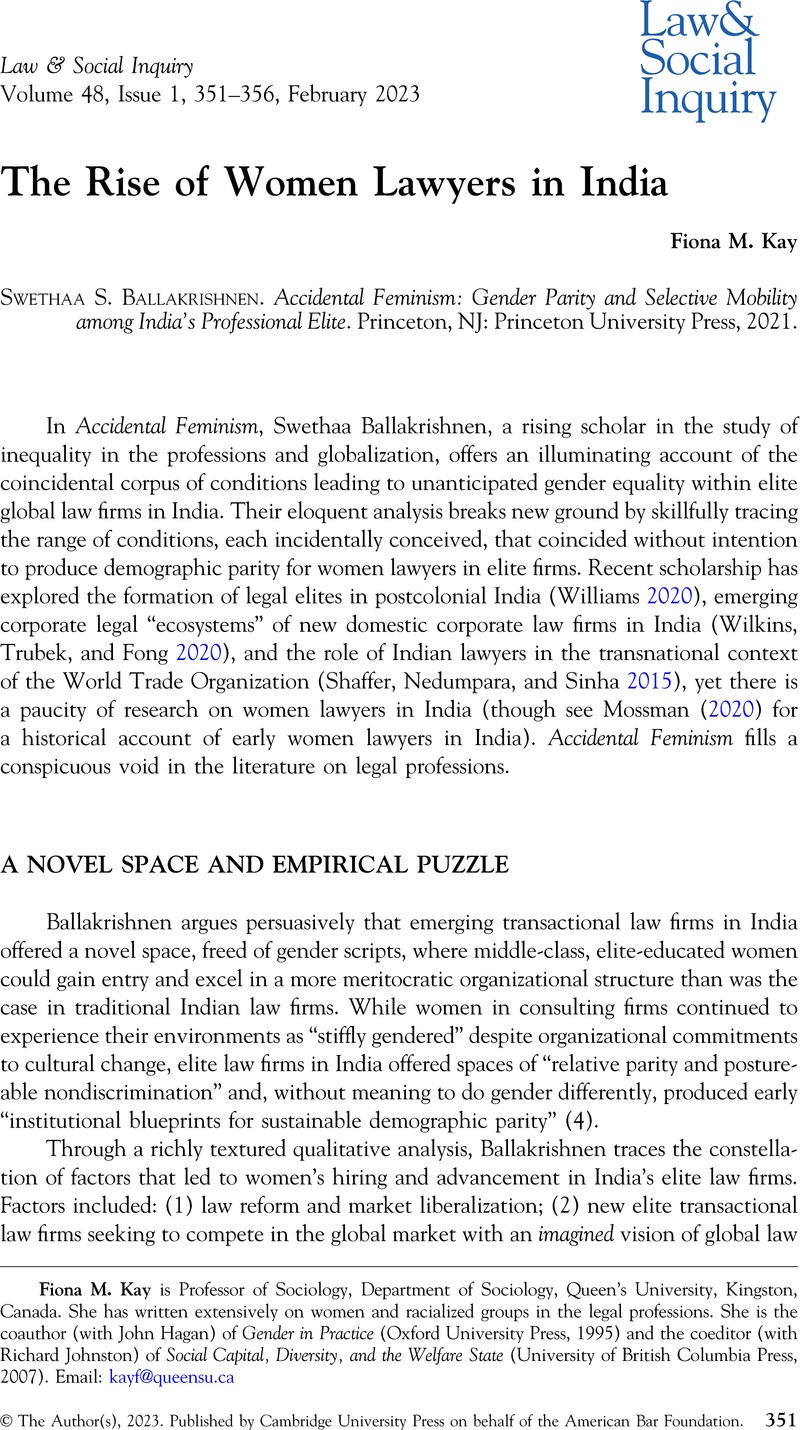No CrossRef data available.
Published online by Cambridge University Press: 03 January 2023

She has written extensively on women and racialized groups in the legal professions. She is the coauthor (with John Hagan) of Gender in Practice (Oxford University Press, 1995) and the coeditor (with Richard Johnston) of Social Capital, Diversity, and the Welfare State (University of British Columbia Press, 2007).